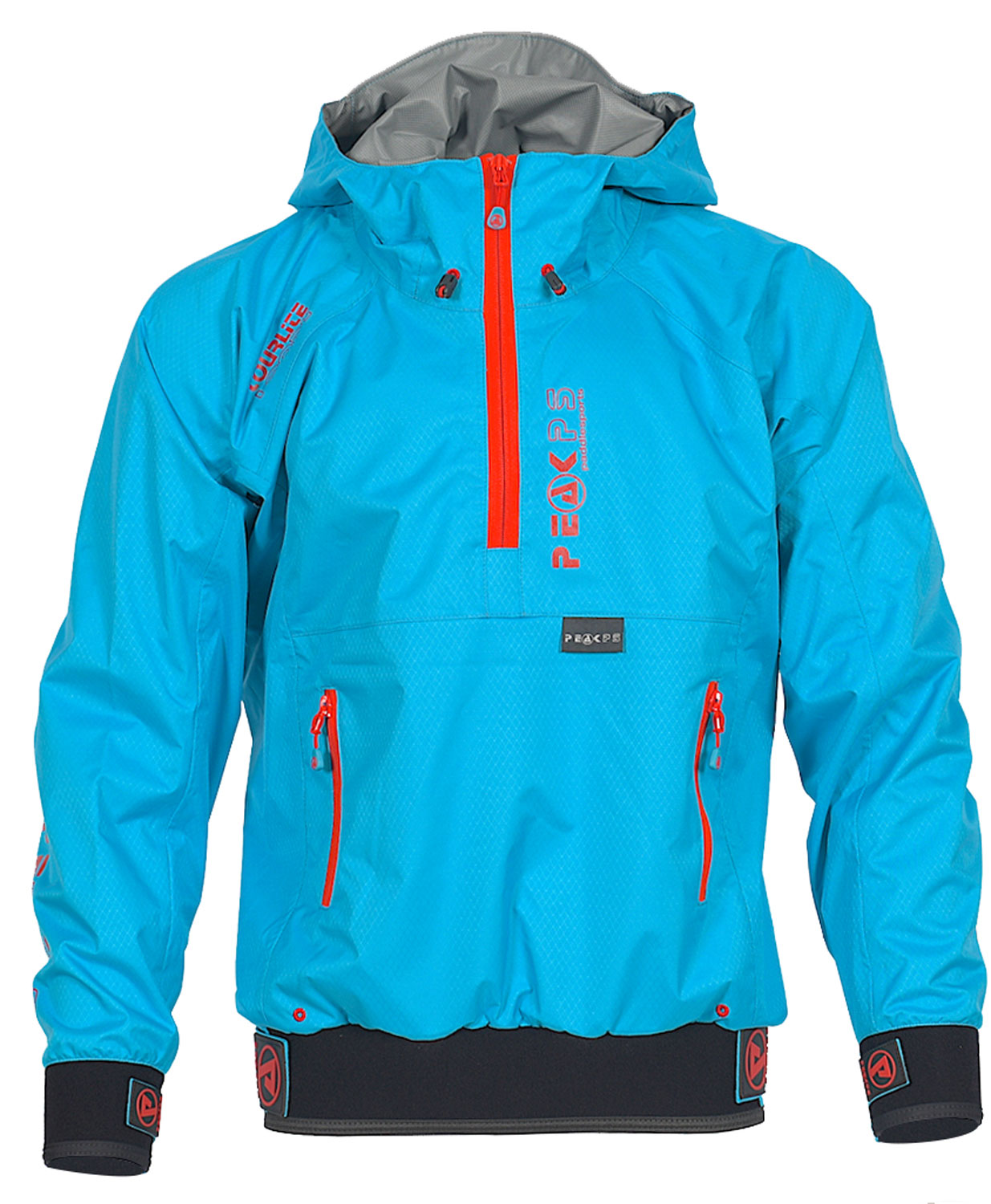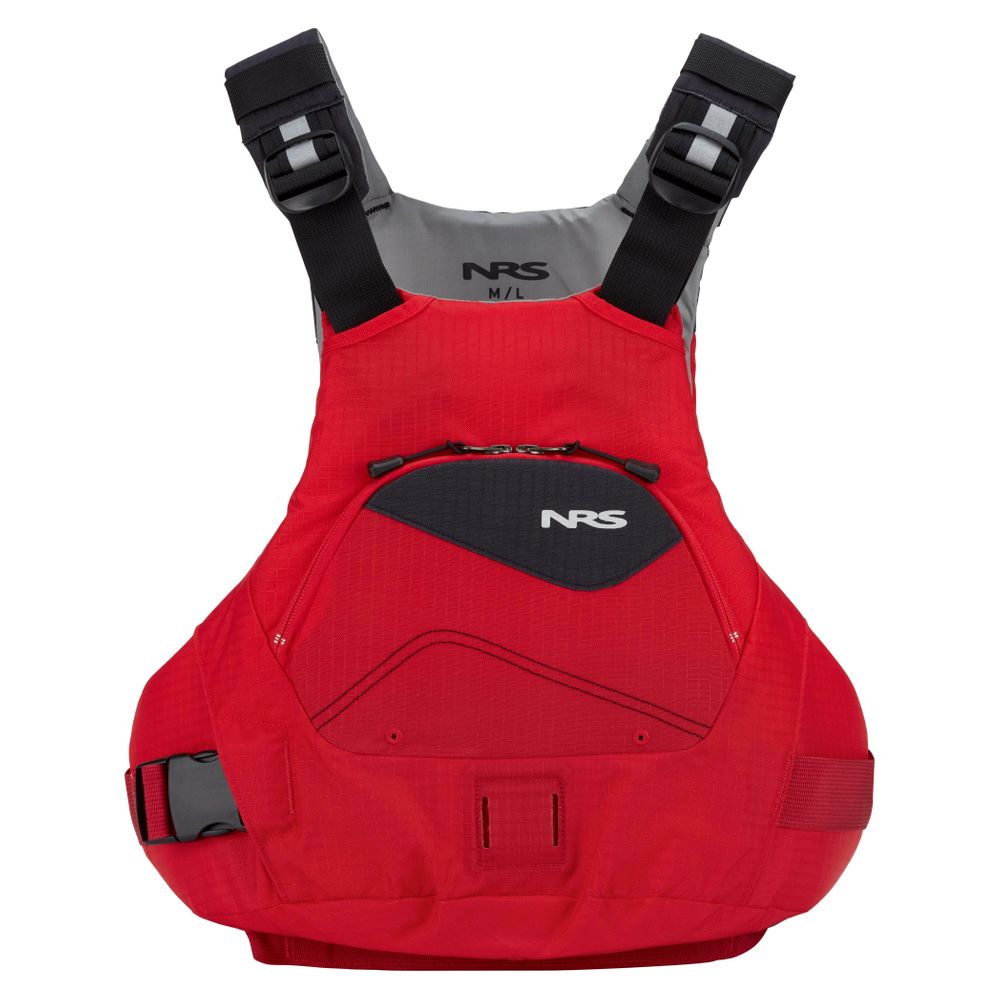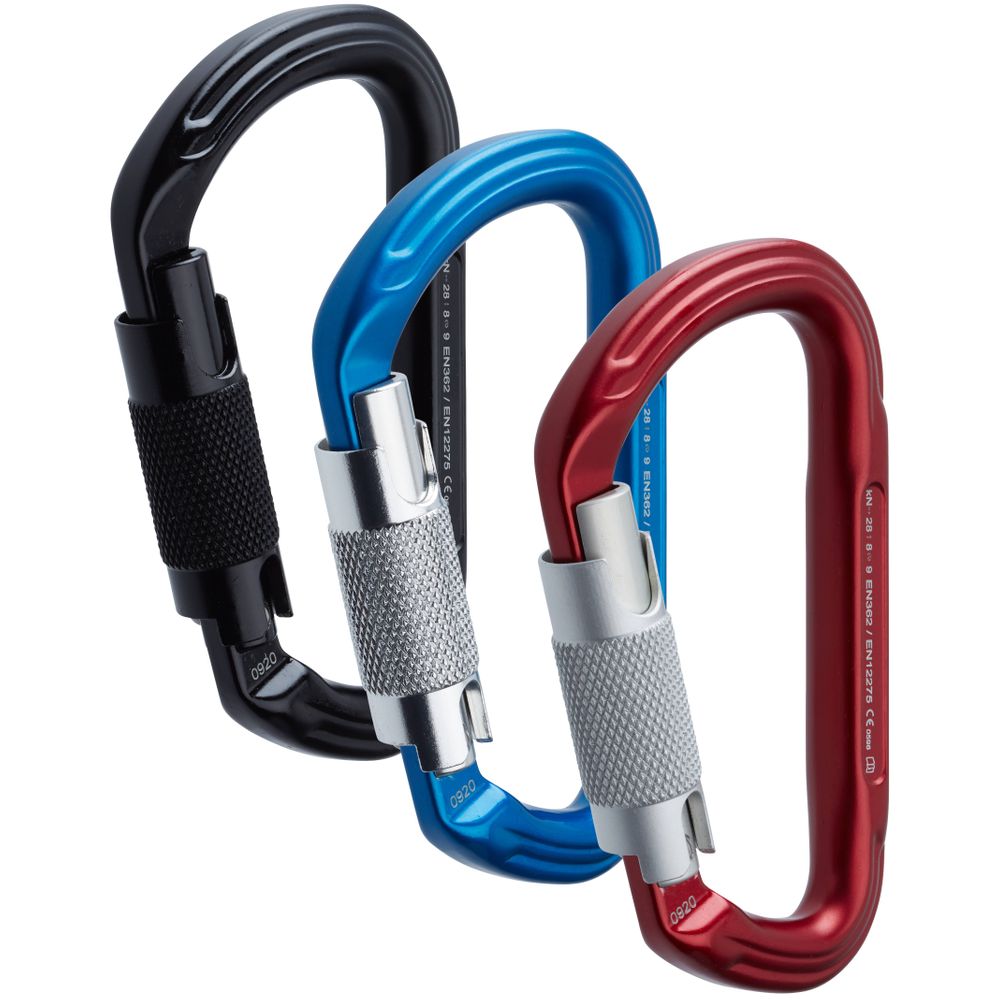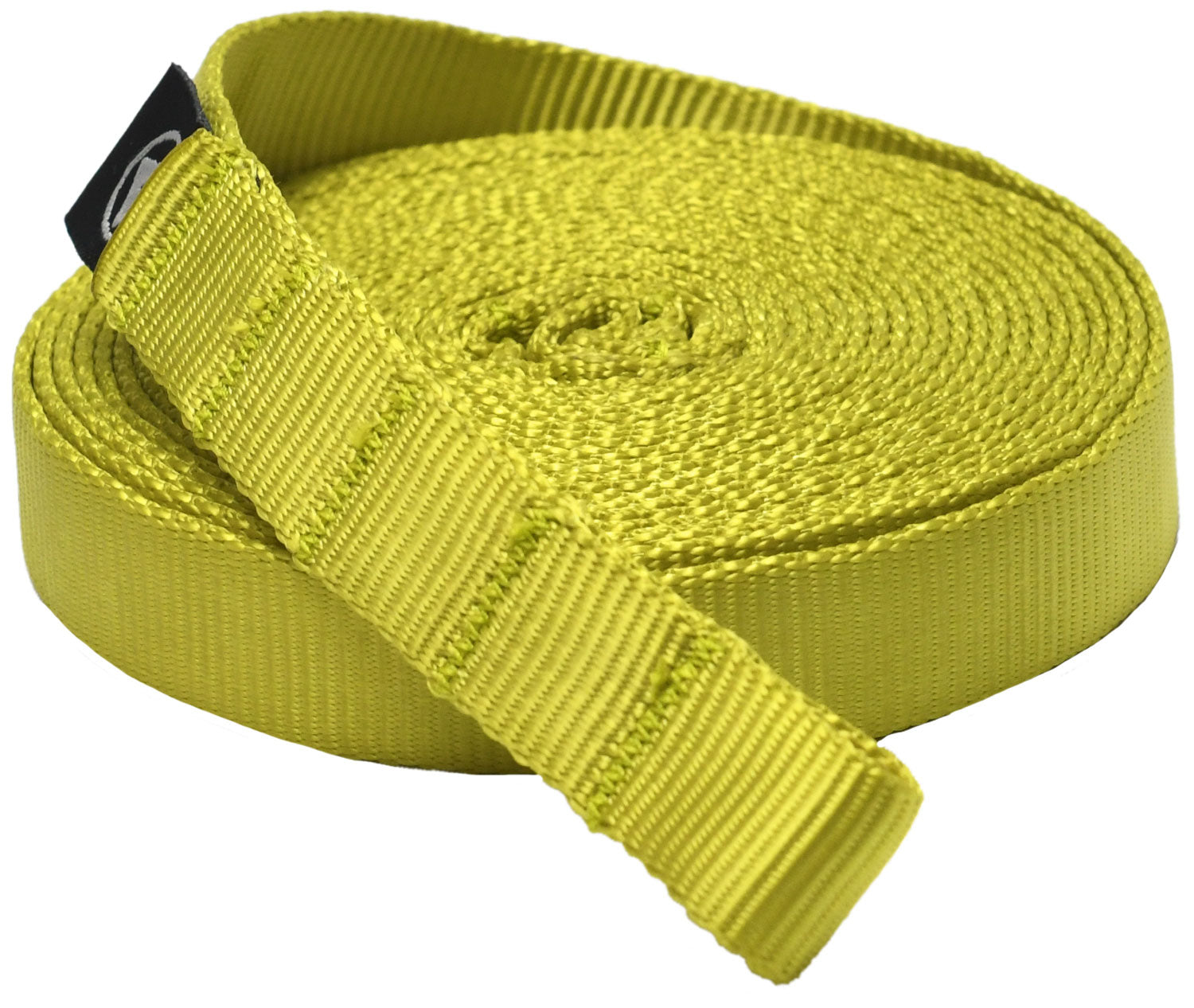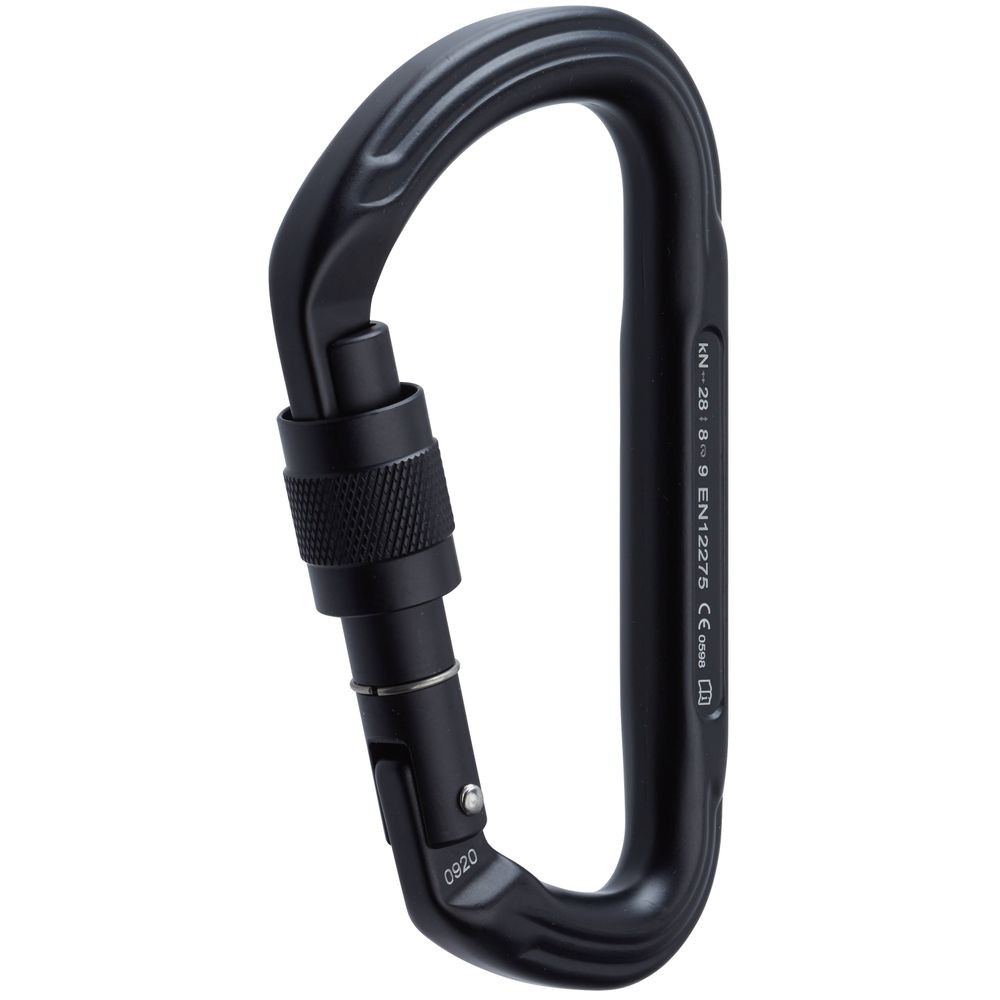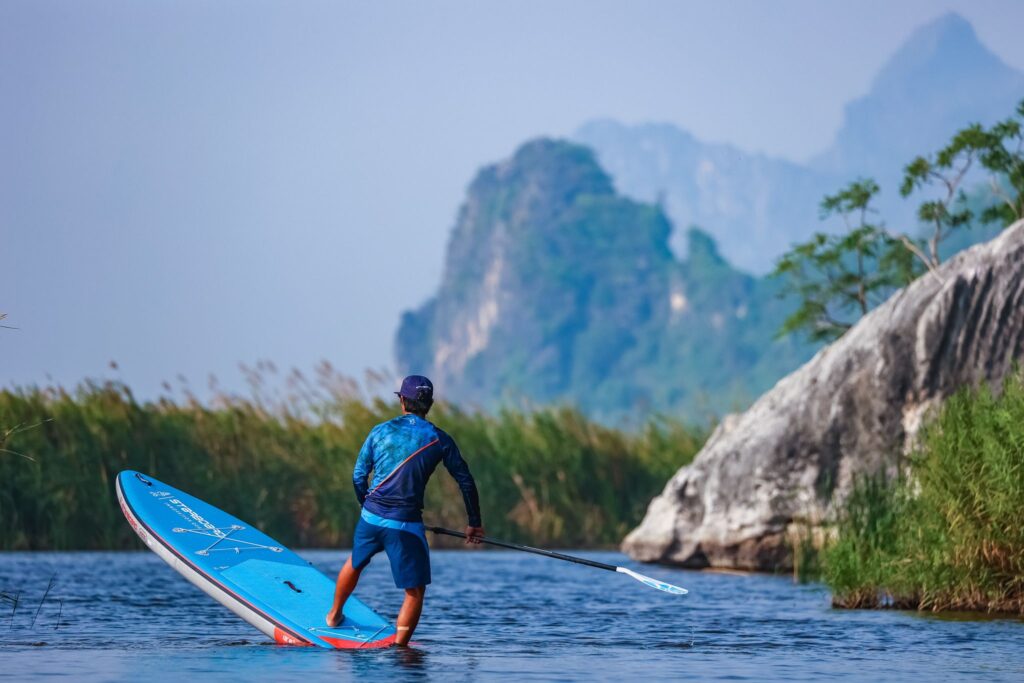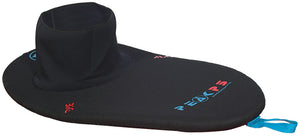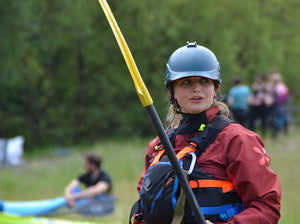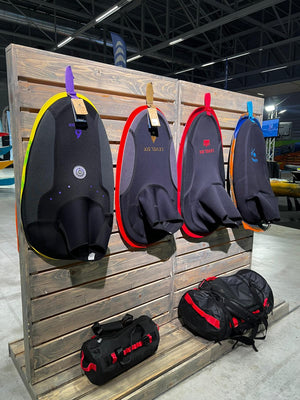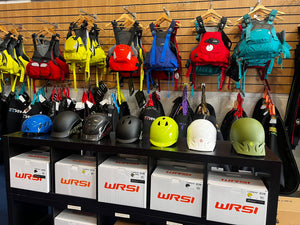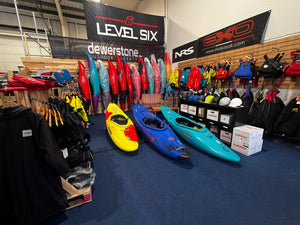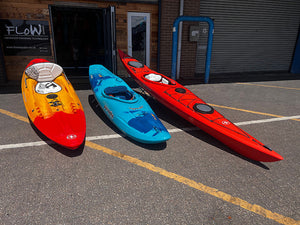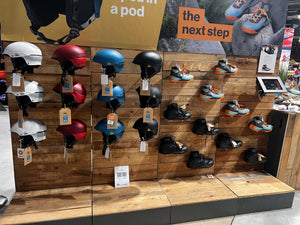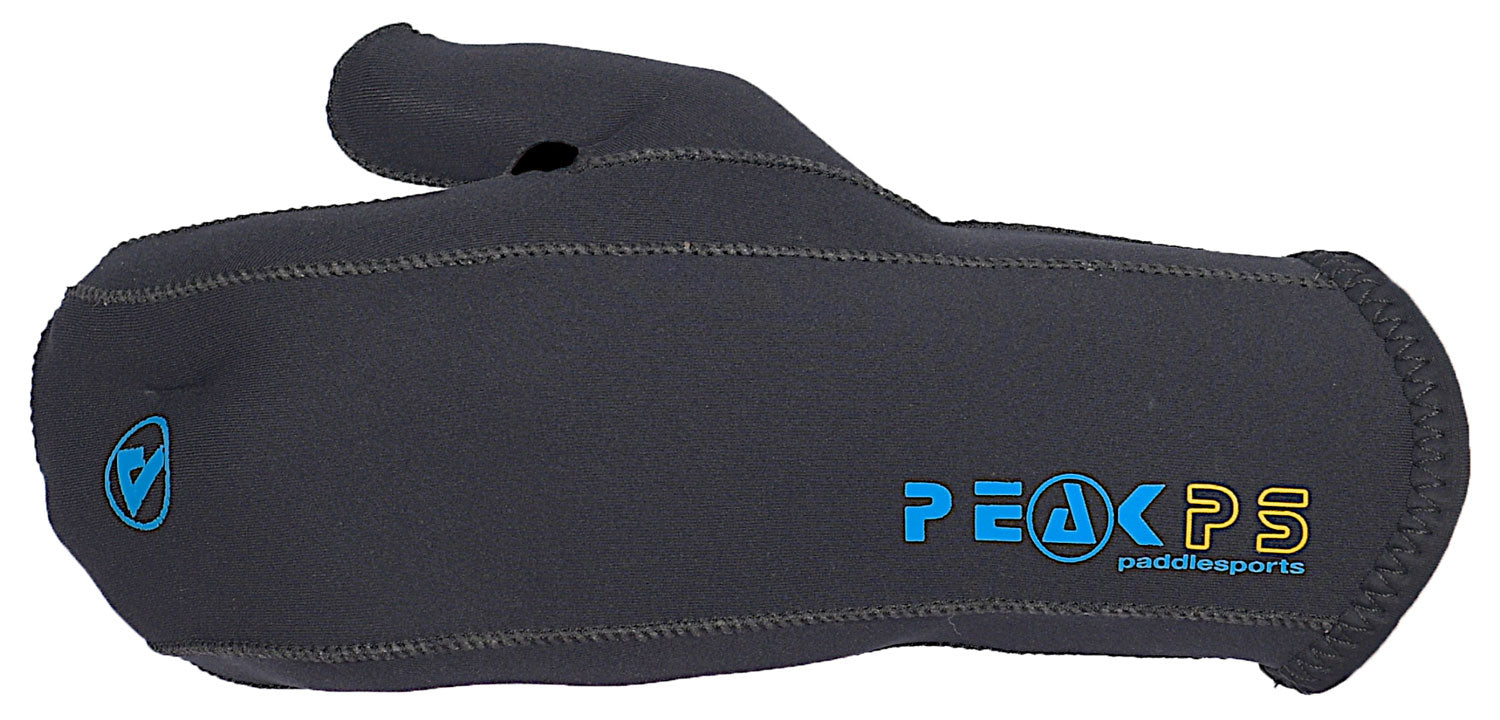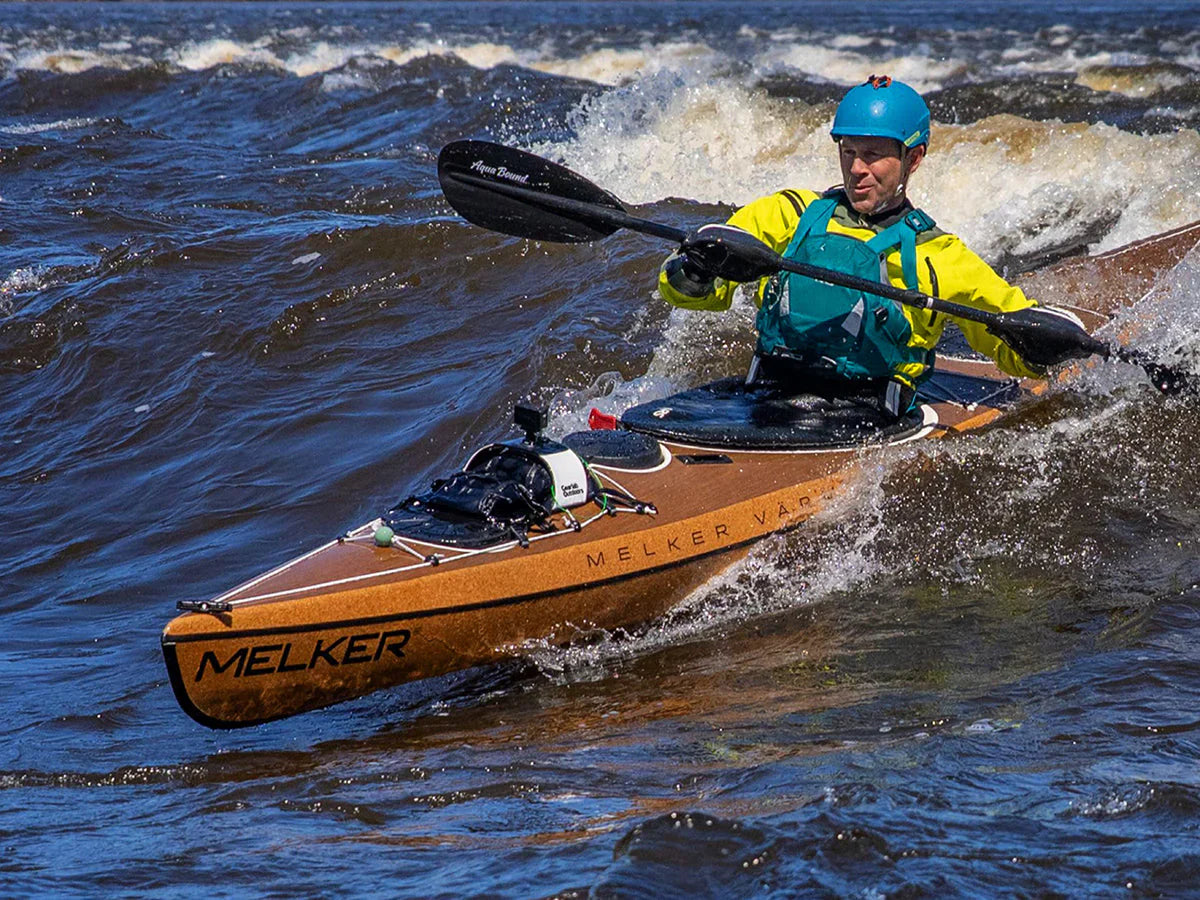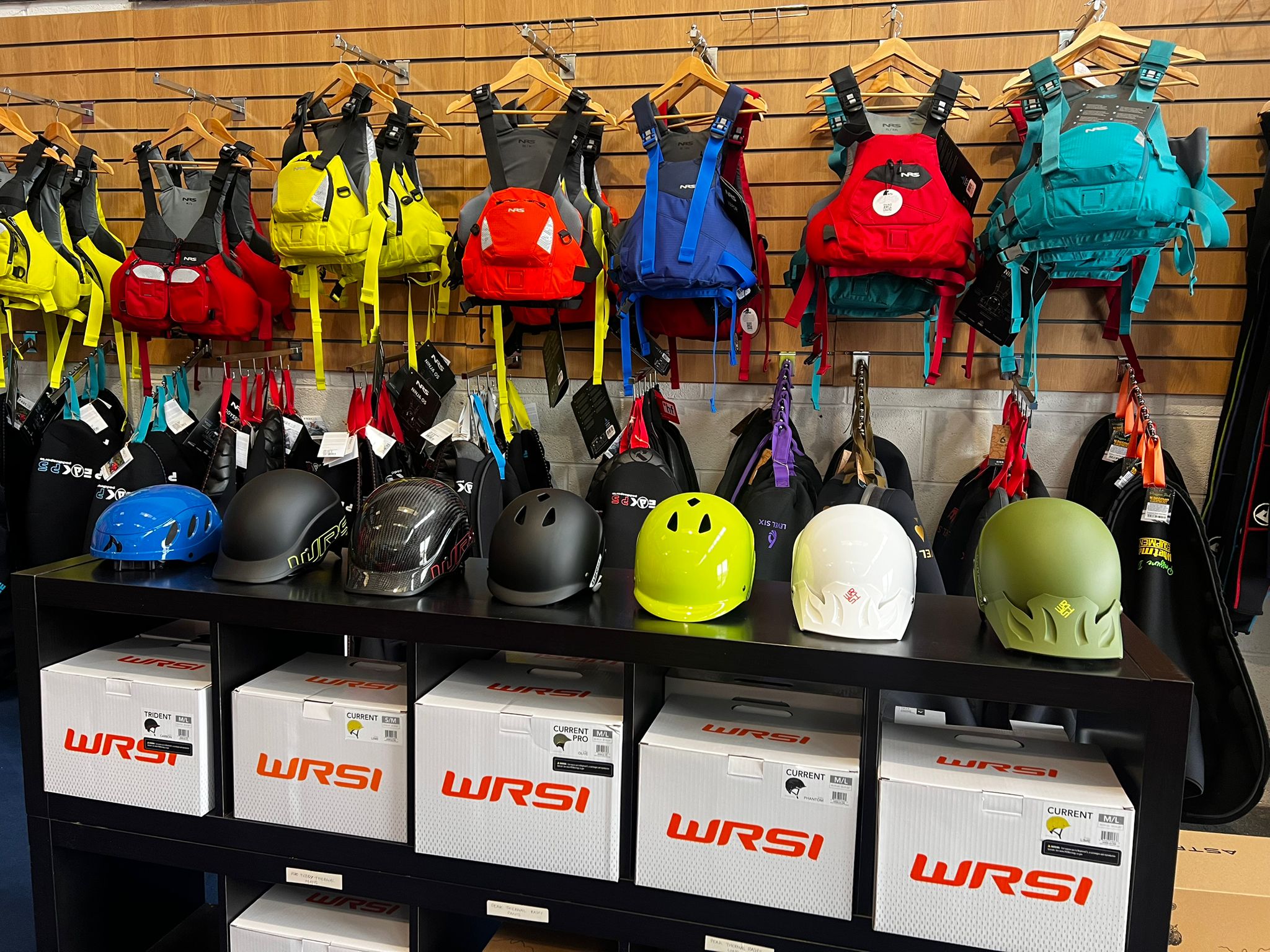5 Essential Tips for Choosing the Perfect Paddle and Board Combo from Flow Kayaks Watersports Shop!

Are you ready to take your paddleboarding game to the next level? Or dip your toe in for the first time? Choosing the right paddle and board combo is key to maximising your enjoyment on the water this year. With so many options available in 2024, it can feel overwhelming to make a decision. That's why we're here to help!
In this article, we'll share five essential tips that will guide you in selecting the perfect paddle and board combo. Whether you're ready to buy your first SUP or are thinking of taking on the rapids, these tips will help ensure that you find the right equipment for your adventures.
Understanding different types of paddleboards
Paddleboarding has gained immense popularity in recent years, leading to a wide variety of paddleboards and SUP equipment available on the market. Before diving into the details of choosing the perfect paddle and board combo, it's important to understand the different types of paddleboards.
1. Surf paddleboards - Designed for riding waves, surf paddleboards are typically shorter and narrower, allowing for better manoeuvrability on the waves.
2. All-round paddleboards - These versatile boards are suitable for various water conditions, making them an excellent choice for beginners. They offer stability and ease of use, making them ideal for recreational paddling, SUP yoga, and shorter trips.
3. Touring paddleboards - Longer and narrower than all-round boards, touring paddleboards are designed for covering longer distances. They have amazing tracking (staying in a straight line) and efficiency, making them perfect for paddlers who want to cover some distance or take overnight trips.
4. Whitewater paddleboards - Whitewater paddleboards are made from tough, durable materials and offer excellent stability. Making them great fun for knowledgable paddlers with established skill sets to test on whitewater rapids.
5. Racing paddleboards - Designed for speed, racing paddleboards are much longer, narrower, and more streamlined than other types. They require more advanced skills and are commonly used in paddleboarding races.
Now that you have a basic understanding of the different types of paddleboards, let's dive into the essential factors to consider when selecting the perfect paddle and board combo!
Tip 1: Assess your skill level and intended use
First things first, it's essential to assess your skill level and think about how you intend to use your paddleboard, this will guide you closer towards the perfect paddle and board combo. Are you a beginner looking for a SUP to learn on? Or are you an experienced paddler seeking a specific board for more intended use?
For beginners, stability is key. Look for a wider and longer board that offers good stability and buoyancy. This will help you gain confidence and develop your skills without feeling too wobbly on the water. As you progress, you can consider transitioning to a more specialised board that suits your goals.
For experienced paddlers, consider your performance specific needs. If you enjoy riding the waves, opt for a surf paddleboard. If long-distance paddling is your passion, a touring board would be more suitable.
Tip 2: Consider the materials and construction of the board and paddle
The materials and construction of both the paddle and board play a crucial role in their performance and durability. Here are some common materials used in paddleboard construction:
1. Epoxy: Epoxy paddleboards are known for their durability and performance. They are made by layering fiberglass or carbon fiber on a foam core, resulting in a lightweight and strong board for those who desire performance and perhaps have a higher budget.
2. Inflatable: Inflatable paddleboards are made from PVC materials that should be able to withstand rough handling and impacts. Inflatable boards are lightweight and easy to store, making them a popular choice for travellers. It's important to stick to reputable brands with these to have an inflatable SUP that is stable and durable. Also look for brands that promote drop stitch technology. We stock Starboard, NRS and Sandbanks in our shop. All of these brands we use on the water ourselves and we love them! Red Paddleboards and Fanatic also offer great quality boards.
3. Soft-top: Soft-top paddleboards feature a soft, foam deck that offers excellent traction and cushioning. They are a great option for outdoor centres, rental companies, beginners and families with children, as they provide extra safety and are more forgiving in the event of a fall.
When it comes to paddles, the most common materials used are plastic, aluminum, fiberglass, and carbon fiber. Aluminum paddles are affordable and durable, making them suitable for beginners, but they can be heavy. Fiberglass paddles are lighter and more responsive, offering better performance. Carbon fiber paddles are the lightest and most high-performance option, often preferred by experienced paddlers, but they can be delicate.
Tip 3: Determine the right size and volume for your paddleboard
The size and volume of your paddleboard are important factors that can greatly affect your experience on the water. The right size and volume required will depend on several factors, including your weight, height, skill level, and intended use.
Generally, a longer and wider board will offer better stability and buoyancy, making it ideal for beginners and recreational paddling. However, if you're a more experienced paddler or looking for a board for specific activities like surfing or racing, for which you may prefer a narrower and shorter board for increased manoeuvrability or longer for speed.
To determine the right size and volume, consider the manufacturer's recommendations based on your weight and skill level, these will often be on the manufacturers specifications. Trying out different boards before making a purchase can also give you a better understanding of what works best for you. Contact your local paddlesports shop to see what demo boards are available, we're certainly happy to help at Flow Kayaks. Alternatively, you could join a local paddling club, you might even make some new friends too!
Tip 4: Test out different paddle lengths and blade shapes
Choosing the right paddle length and blade shape is essential for efficiency and comfort during paddling. The length of the paddle should be based on your height and the type of paddling you'll be doing.
To find the right paddle length, stand upright and raise your arm above your head. The paddle should reach your wrist or palm comfortably. If you're into surfing or whitewater, which require quick manoeuvrability, consider a slightly shorter paddle for better control.
Blade shape is also important. There are two main types of blade shapes: teardrop and rectangular. Teardrop-shaped blades offer decent power and control, which are more suitable for a wide range of activities. Rectangular blades provide plenty of power and cut through the water more easily. These are great for racing and longer distances as they slow down fatigue.
Testing out different paddle lengths and blade shapes will help you find the perfect combination that suits your body mechanics and paddling style. You can check out our range of SUP paddles here.
Tip 5: Read reviews and get recommendations from experts
Before making a final decision, it's always a good idea to read reviews and seek recommendations from experts and experienced paddlers. They can provide valuable insights and firsthand experiences that can help you make an informed decision.
Online forums, social media groups, and specialised paddleboarding websites are excellent resources for gathering information and connecting with fellow paddlers. Reach out to the paddleboarding community and ask for advice or recommendations. Their input can be invaluable in finding the perfect paddle and board combo.
Additional accessories and gear to enhance your paddleboarding experience
Alongside the paddle and board combo, there are several additional accessories, clothing and equipment that can enhance your paddleboarding experience. Here are some essentials to consider:
1. Leash - A leash is for safety, as it keeps you connected to your board in case you fall off. It prevents your board from drifting away and helps you retrieve it easily. The use of these is debated as special leashes are needed or not needed for different environments. We won't dive into that right now.
2. Buoyancy Aid or PFD - A personal flotation device (PFD) or buoyancy aid is essential for your safety, especially if you're paddling in open waters or areas with strong currents. Choose a PFD that is comfortable and properly fits your body. It's best to visit a specialist paddlesport retailer if your purchasing for the first time. You can find our range of SUP buoyancy aids here.
3. Dry bag - A waterproof dry bag is perfect for storing your essentials, such as your phone, keys, and snacks. It will keep your belongings dry and secure whilst you're out on the water.
4. Sun protection - Protecting yourself from the sun is crucial during paddleboarding. Wear sun cream, a rash guard, a hat and sunglasses to shield yourself from harmful UV rays if the sun is out.
5. Watersports clothing - Depending on the weather and water conditions, consider wearing watersports clothing or a wetsuit to stay comfortable and warm.
These accessories will not only enhance your safety but also make your paddleboarding adventures much more enjoyable!
To round it up
Choosing the perfect paddle and board combo is a personal decision that depends on your skill level, intended use and also your personal preferences. By understanding the different types of paddleboards, considering the materials and construction, determining the right size and volume, trying out different paddle lengths and blade shapes, and seeking recommendations from experts, you're well on the way to selecting the equipment that best suits your needs.
© Flow Kayaks Ltd. 2024

